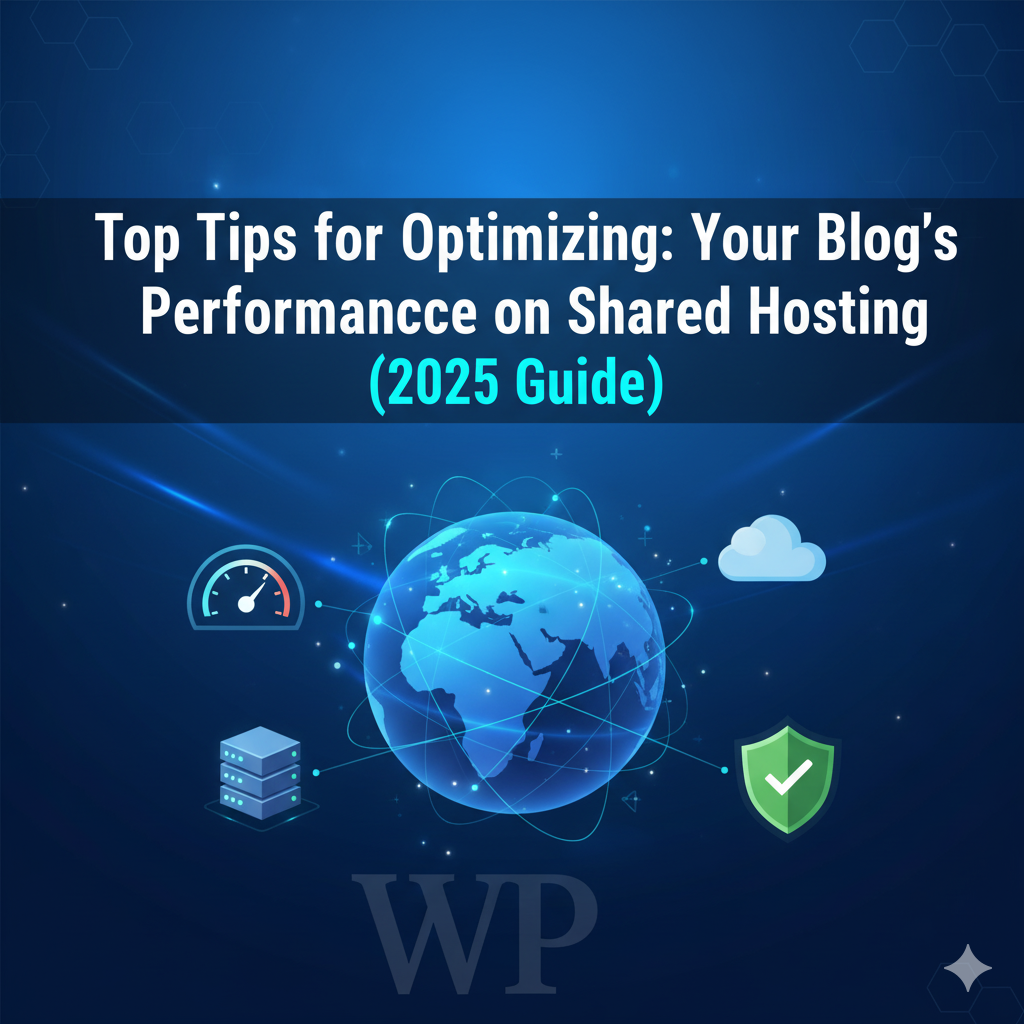
Tips for Optimizing Your Blog’s Performance on Shared Hosting
If you’re running your blog on a shared hosting plan, you’re not alone — it’s one of the most popular and affordable ways to start a website. However, shared hosting means you’re using the same server resources as dozens (or even hundreds) of other sites. Without proper optimization, this can lead to slow loading speeds and poor SEO performance.
Here are proven tips to help you optimize your blog for better speed and stability on shared hosting.
1. Choose a Fast, Lightweight Theme
Your theme sets the foundation for your blog’s performance. Avoid themes packed with unnecessary animations or heavy code. Instead, go for a lightweight WordPress theme such as GeneratePress, Astra, or Neve. These are built for speed, clean coding, and SEO-friendly design.
2. Compress and Optimize Your Images
Images can make or break your website speed. Always compress images before uploading them using tools like TinyPNG or ImageOptim. For automation, install a plugin such as ShortPixel, Smush, or Imagify. Converting images to WebP format and enabling lazy loading ensures faster load times and better Core Web Vitals scores.
3. Use a Caching Plugin
Caching is essential on shared servers. It stores static copies of your pages, reducing the time it takes to deliver content to users. Popular caching plugins like W3 Total Cache or WP Super Cache can cut your load time dramatically. Pair caching with browser caching and GZIP compression for even better results.
4. Limit Unnecessary Plugins and Scripts
Each plugin or external script you use consumes additional resources. Review your plugin list regularly and deactivate anything non-essential. Try to use multi-purpose plugins that handle multiple functions efficiently. Also, delay or defer non-critical JavaScript to speed up initial page rendering.
5. Enable a Content Delivery Network (CDN)
A CDN distributes your site’s static files (like images and CSS) across global servers. Visitors then load data from the closest server, reducing latency. Free CDNs such as Cloudflare or Bunny.net integrate seamlessly with WordPress and are perfect for shared hosting users.
6. Keep Your Blog Updated
Always update WordPress core, plugins, and themes. Updates often include performance enhancements and security patches that help your blog run smoothly. Outdated software can slow down your site or make it vulnerable to attacks.
7. Clean and Optimize Your Database
Your blog’s database accumulates unnecessary data over time—like post revisions, spam comments, and temporary files. Use plugins like WP-Optimize or Advanced Database Cleaner to tidy it up. A clean database leads to faster queries and improved performance.
Final Thoughts
Shared hosting has its limits, but with smart optimization, your blog can still run fast and efficiently. Focus on lightweight themes, optimized images, caching, and regular maintenance. By applying these tips, you’ll boost your blog’s performance, SEO rankings, and user satisfaction — all without spending more on hosting upgrades.